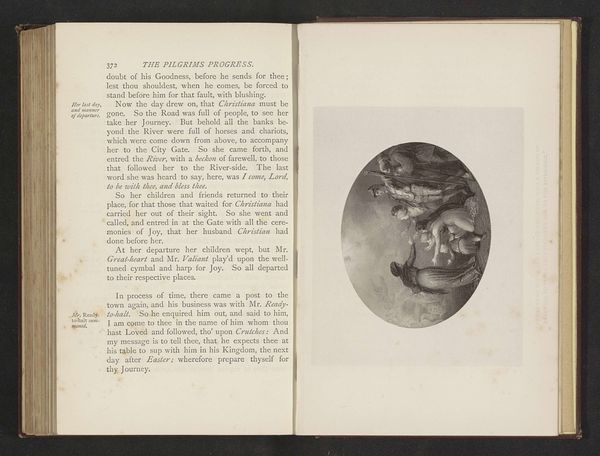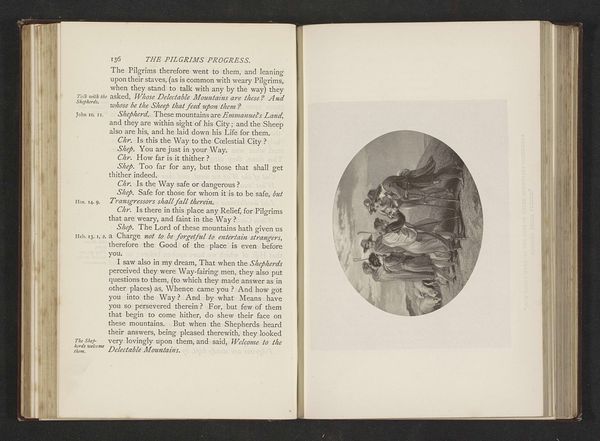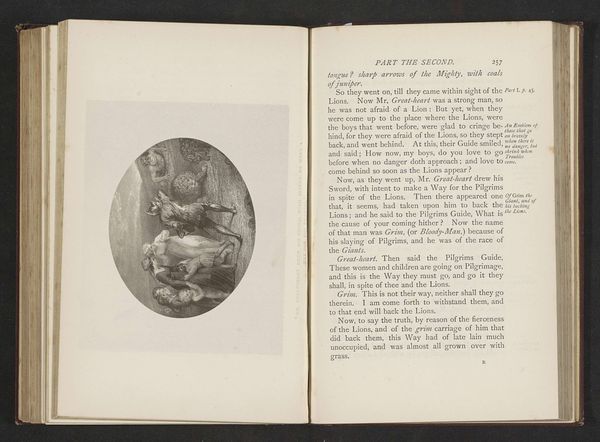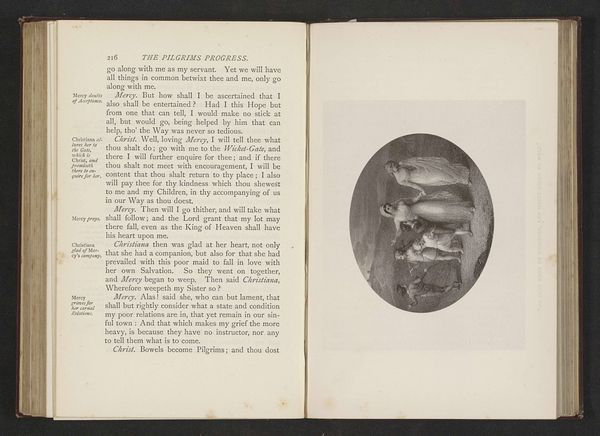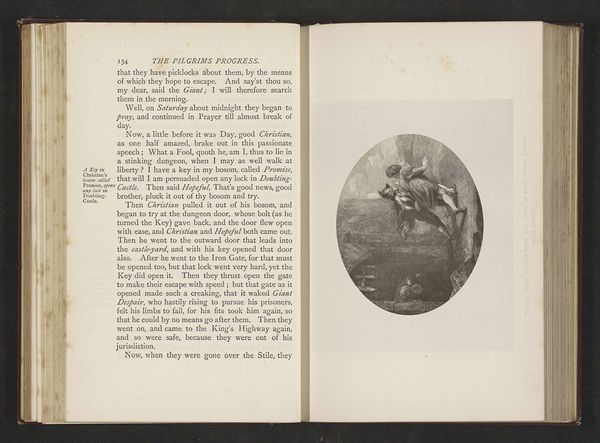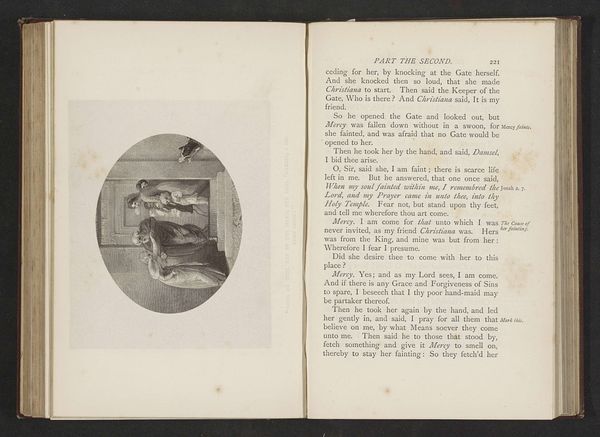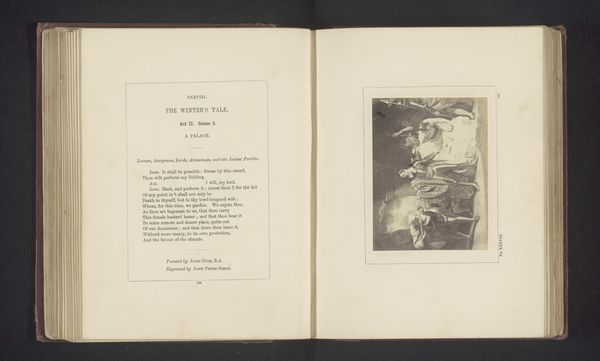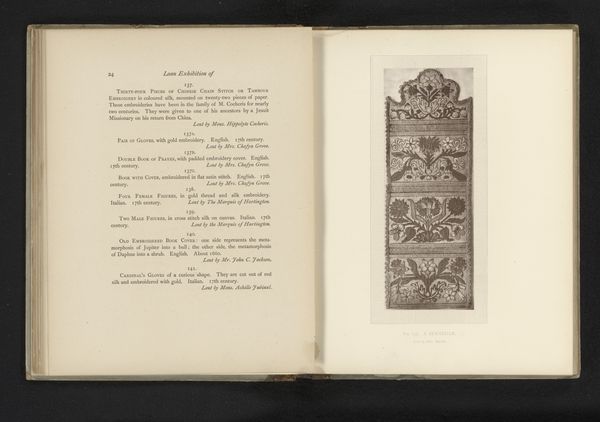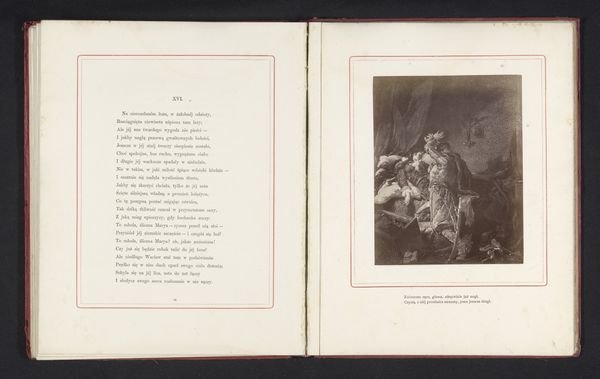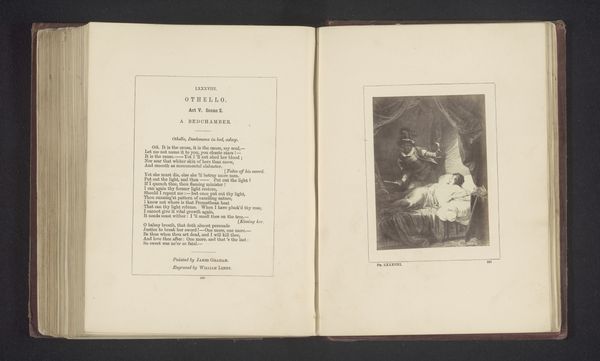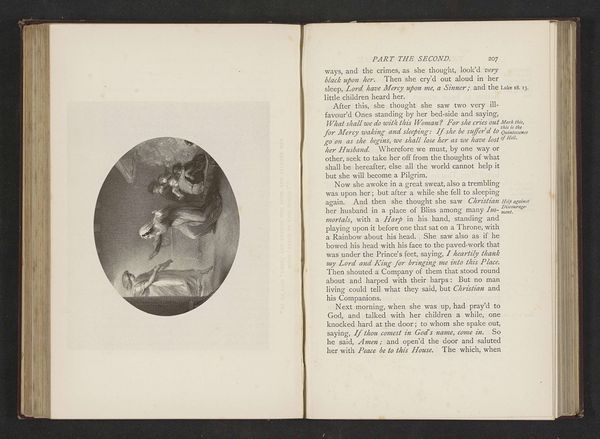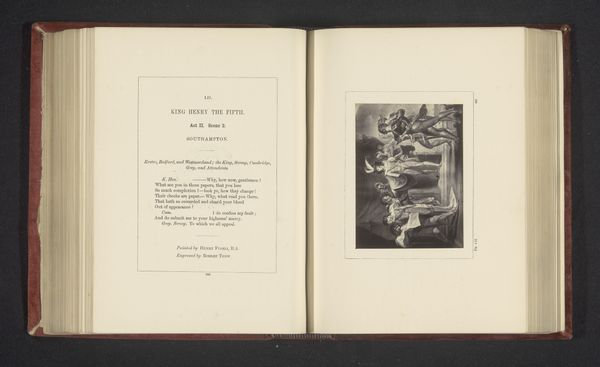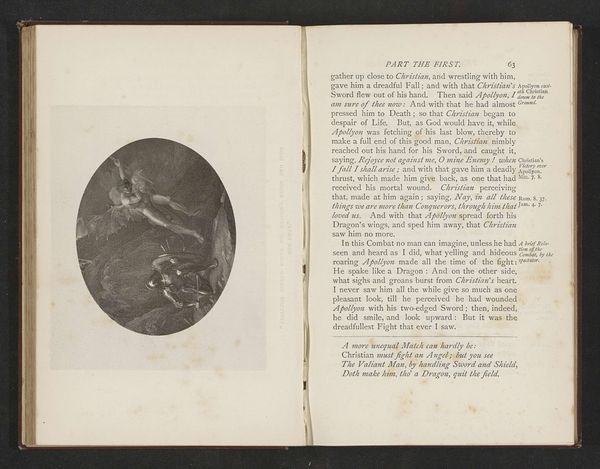
Fotoreproductie van een illustratie door Thomas Stothard voor Eens Christens reize naar de Eeuwigheid door John Bunyan before 1881
0:00
0:00
lithograph, print, etching
#
narrative-art
#
lithograph
# print
#
etching
#
book
#
history-painting
Dimensions: height 80 mm, width 100 mm
Copyright: Rijks Museum: Open Domain
Curator: This piece is titled "Fotoreproductie van een illustratie door Thomas Stothard voor Eens Christens reize naar de Eeuwigheid door John Bunyan," a lithograph from before 1881. It feels very… illustrative, literally! A snapshot from a story. What catches your eye? Editor: The way the artist staged this almost theatrical scene feels so deliberate. How might illustrations like this one shape the public's perception and reception of literary works during this period? Curator: That's a crucial point. Consider the power of images in a pre-mass media age. These illustrations weren't merely decorative; they offered a visual interpretation, a specific lens through which readers could understand Bunyan's allegories. Stothard's choices, like the positioning of characters, the emphasis on certain details, became part of the collective understanding of the text itself, often influencing how readers engaged with theological and social themes presented in the book. Think about the intended audience: How would this imagery speak to them? Editor: So the image becomes a powerful tool of interpretation in and of itself, maybe even guiding thought. Did certain artistic or stylistic choices become the accepted 'vision' of the book? Curator: Exactly. Styles popular at the time could also signal social status and literacy rates, which dictate who might buy the book. Were these aimed at a general public or affluent consumers? The visual style became inherently tied to how the book was read and received. Editor: That gives me a whole new perspective on the social weight these illustrations carried. Thanks! Curator: Indeed, examining illustrations allows us to dissect the complex relationship between art, literature, and the construction of public thought. Always consider who gets to create the visual language and whose stories it amplifies!
Comments
No comments
Be the first to comment and join the conversation on the ultimate creative platform.
